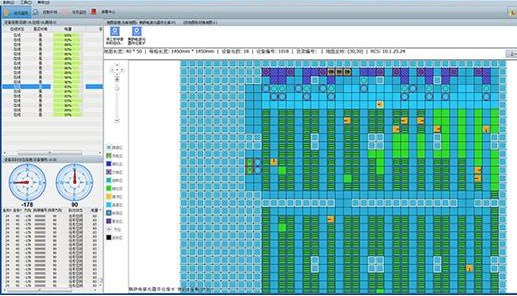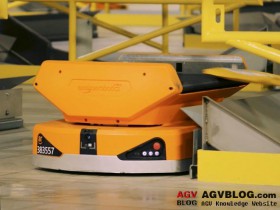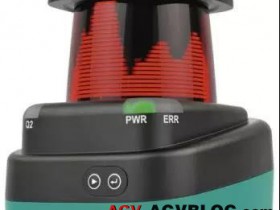The intelligent warehousing mobile robot path planning method comprises the following steps: first, the mobile robot performs training in a simulated environment;
A1: Set the target of the mobile robot during motion, the random initial target point coordinate position information (xt, yt) and the target radius range Rm; xt, yt respectively represent the X and Y axis coordinates of the center of the target point in the static map, and Rm represents A square region with a side length of dmin centered on (xt, yt), can reach the destination in the region, and set the current pose (x, y, θr) of the mobile robot, where x, y are the current mobile robot The position coordinate, θr is the angle between the moving direction of the mobile robot in real time and the X axis, and the path information is planned by the position information (θ, d) of the target point in the polar coordinates of the mobile robot, and travels forward at a fixed speed, θ is The angle information of the target point in the polar coordinates of the mobile robot, and d is the distance information of the target point from the center of the mobile robot;

Intelligent warehousing mobile robot path planning method
A2: during the navigation process, the environmental data Li and the target position data Di detected by the laser sensor on the mobile robot are pre-processed and characterized, and then combined to obtain the environmental data Si;
A3: using the depth determination gradient strategy method to obtain the next action state a, a ∈ W represents the angle that the mobile robot deflects when performing the action is in the W range;
A4: determine whether the mobile robot reaches the target point (xt, yt), if not, return to a2 to continue navigation, if it has arrived, end navigation;
A5: After ending the navigation, update the policy sub-network in the depth determination gradient policy method according to the reward value, evaluate the network parameter, and save the network parameter in the depth determination gradient strategy method after the training success rate reaches the target success rate; S2 : The actual environment mobile robot navigation uses the depth determination gradient strategy method in which the network parameters are saved in S1 to perform mobile robot motion selection.




